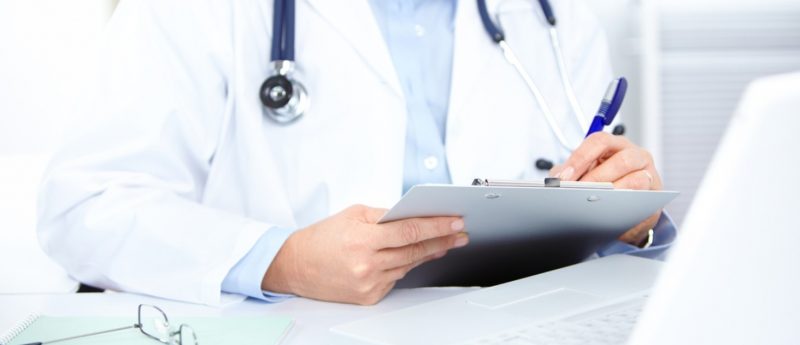Industry Update: Clinical trials

Latest clinical trial developments compiled from July 01 — August 31 2016
Latest clinical trial developments in the field of stem cell research and regenerative medicine compiled from publicly available information and press releases from non-academic institutions from July 01 — August 31 2016, scheduled to be published in Volume 11 Issue 8 of Regenerative Medicine.
Asterias
Asterias Biotherapeutics (CA, www.asteriasbiotherapeutics.com/) completed enrollment and dosing of 5 patients in the Phase 1/2a clinical trial SCiSTAR evaluating the activity of escalating doses of AST-OPC1 (oligodendrocyte progenitor cells) in newly injured patients with sensory and motor complete cervical spinal cord injury (SCI). The SCiSTAR study is being partially funded by a USD 14.3 million grant from the California Institute of Regenerative Medicine (CIRM;CA, www.cirm.ca.gov). The 5 patients were administered 10 million AST-OPC1 cells. Observations from the earlier low does cohort of 3 patients receiving 2 million cells showed improved upper extremity motor function relative to their baseline exams and no serious or unexpected adverse events related to AST-OPC1. The company recently received clearance from the US FDA to expand enrolment in the study, including up to three additional patients into this 10 million cell cohort for a total of eight patients.
BrainStorm
BrainStorm Cell Therapeutics (Israel; www.brainstorm-cell.com) announced results from the recently completed U.S. randomized, double-blind, placebo-controlled phase II Study of autologous transplantation of Neurotrophic factors-secreting Mesenchymal Stromal Cells (MSC-NTF,NurOwn®) in 48 patients with Amyotrophic Lateral Sclerosis (ALS) The study showed that NurOwn is safe and well tolerated, but also higher response rates NurOwn-treated subjects (n=36) compared to placebo (n=12) at all time points in the study. The pre-specified efficacy analyses were: change in the slope of Amyotrophic Lateral Sclerosis Functional Rating Scale (ALSFRS-R) score, change in Slow Vital Capacity (SVC) and muscle strength, responder analysis (the percentage of subjects who improved post-treatment compared with pre-treatment), and a subgroup analysis excluding slowly progressing patients. Additional information could be found at https://clinicaltrials.gov (ID: NCT02017912).
Cytori
Cytori Therapeutics (NASDAQ: CYTX) has published the results from an investigator-initiated Phase I trial using Cytori Cell Therapy in patients with insufficient maxillary bone prior to dental implantation [1]. The publication reported approximately 42% greater bone formation in maxillary sinus floor elevation (MSFE) procedures treated with cells in combination with scaffolds versus those that received scaffold alone. The study enrolled 10 patients requiring dental implants but who had insufficient bone into which the implant could be inserted. The maxillary bone deficiency was treated with two different commonly-used, off-the-shelf bone calcium phosphate scaffolds that were used either alone or preloaded with Adipose-Derived Regenerative Cells (ADRCs) prepared using Cytori’s Celutionâ„¢ System. In six patients, the patient served as their own control as one side of the mouth was treated with scaffold alone and the other side was treated with ADRC-supplemented grafts. Six months after treatment all patients underwent dental implant placement at which time The trial results reported approximately 42% greater bone formation in grafts that were supplemented with ADRCs. Specifically, in patients who received both a control scaffold and a contralateral ADRC- supplemented scaffold, the ratio of bone volume to total graft volume as measured by micro computerized tomography (microCT) was 19.5% ± 3.8% in grafts supplemented with ADRCs versus 13.7% ± 4.4% for the control grafts (p = 0.03). A similar trend was seen by histologic assessment of biopsies. They also noted that all 10 patients were treated uneventfully, with no adverse effects reported or detected in a large set of safety parameters through 3 years of follow-up.
Gamida
Gamida Cell (Israel; www.gamida-cell.com) announced that the first patient with sickle cell disease (SCD) has been transplanted with CordInTM, an experimental curative treatment for rare nonmalignant diseases such as SCD and thalassemia, bone marrow failure syndromes such as aplastic anemia, genetic metabolic diseases and refractory autoimmune diseases. CordIn is an ex vivo expanded cell graft, utilizing Gamida Cell’s proprietary NAM platform technology to expand cells from the umbilical cord blood, and is enriched with stem and progenitor cells as well as with immunomodulatory myeloid derived dendritic cells. The transplant took place at UCSF Benioff Children’s Hospital Oakland. The company already started a Phase 1/2 study in a double graft configuration in 8 patients with SCD.
SanBio
SanBio (CA, USA; http://sanbio.com) announced the randomization of the first patient in the STEMTRA (Stem cell therapy for traumatic brain injury) Phase 2 clinical trial study for patients with chronic motor deficits resulting from traumatic brain injury. SB623 cells consist of modified allogeneic bone marrow mesenchymal stem cells (MSC) derived from healthy human adult donors. Administration of SB623 cells should promote recovery from injury by triggering the brain’s natural regenerative ability. The trial, evaluating the efficacy, safety and tolerability of SB623 administration, will enroll patients in 25 clinical trial sites throughout the USA and five sites in Japan, and is expected to reach 52 patients in total.
Reference:
[1] Prins HJ, Schulten EA, Ten Bruggenkate CM, Klein-Nulend J, Helder MN. Bone Regeneration Using the Freshly Isolated Autologous Stromal Vascular Fraction of Adipose Tissue in Combination With Calcium Phosphate Ceramics. Stem Cells Transl Med (2016) (Online before print)